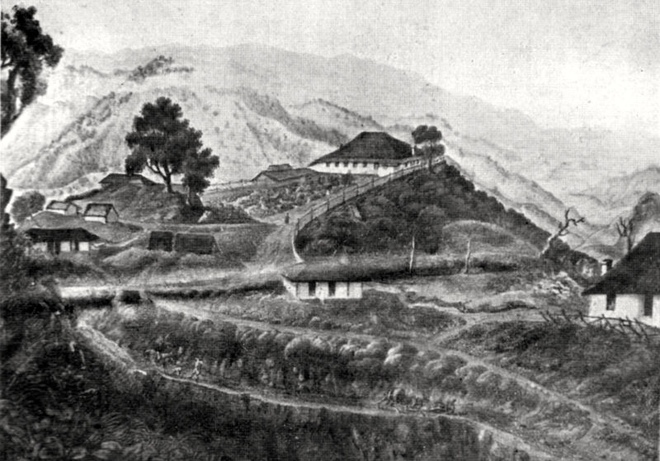
Potato farms that were started by Captain Fredrik Young in Mussoorie. Photo courtesy: Ganesh Saily
Ajay Ramola
Tribune News Service
Mussoorie, December 13
Mussoorie was once an unknown place and it owes a lot to malarial mosquitoes, potatoes and the British yearning for a home for its discovery and development as an important hill station that is now known as the “Queen of hills”.
The Anglo-Gurkha war ended with the treaty of Sugauli in 1815, resulting in the British getting hold of the territory around Dehradun. The British being from cooler climes and not able to bear the summer heat of the Indian plains, yearned for a place having conditions similar to the United Kingdom.
A number of British dying due to malaria was another reason that they looked towards the horseshoe-shaped ridges above Dehradun, thus leading to the discovery of the place that over a long period developed into present day Mussoorie.
The earnest desire of the British to find a place of their liking was coupled with the love of Captain Fredrik Young, founder of Sirmour Rifles and of Irish descent, for potatoes. He was looking for a place to sow superior seeds of potato-berries he had received during his tenure as an army officer in Dehradun. Potato is a staple diet of Irish people.
The Shivaliks, near Dehradun, were considered malarial and it was believed that the forest-clad foothills of the Himalayas would also not be suitable for potatoes, leaving Captain Young in a confused state.
While he was deliberating where to sow his potatoes, some men from Garhwal told him that they too were fond of new Irish potatoes and had grown them in the hills with some success. They suggested to Captain Young to try the upper part of the Himalayan range directly in front of the Doon valley to sow potatoes.
Excited with the idea, Captain Young along with FJ Shore, then Superintendent of Doon, set out and came across oak and rhododendron trees at above 4,000 feet and deodar trees at 6,000 feet.
The climate was so cool and delightful that they forgot to sow potatoes and instead erected a small hunting lodge on the northern slopes of the mountain. Subsequently, Captain Young made several visits to his hunting lodge. Besides a few residents of scattered villages, no one lived on the upper slopes of the mountain. The forest had a sizeable population of bears, leopards, and barking dears; pheasants in shady ravines and the Himalayan trout in the Aglar river to the north. Two years later, Captain Young, who was promoted to the rank of Colonel, built the first house of the settlement and named it “Mullingar” after his home in Ireland. The house is still visible on the way to Landour. He also built another house “Annfield”, which is now in ruins. Following the example, many people began settling in the twin towns of Mussoorie and Landour.
The cool climate brought the memories of home to most of the British, who rushed to Mussoorie to relax and enjoy, especially during the summer. In 1827, a sanatorium was built at Landour that became a large cantonment for military training later. The town gradually grew as the pleasure capital with several anecdotes of love, elopement and scandal becoming the order of the day. The places such as Savoy Hotel, Cecile Hotel (now Hotel Prince or Amawan Palace), Hackmans Hotel, Himalaya Club and Rink became an entertainment hub. Maharajas also flocked to these places during the summer and threw wild parties in the palaces built especially to cater to the British elitist groups frequenting Mussoorie, turning the place into a favourite tourist destination that it remains to this day.
Thankfully, the name of these mountain ridges has been derived from a shrub called “Masuri” or “Mansoor”. Otherwise, there was the probability of the mountain ridges being called “Mount Aloo”, which would have become a cause of embarrassment for the future generations, says eminent author and storywriter Ruskin Bond.



























